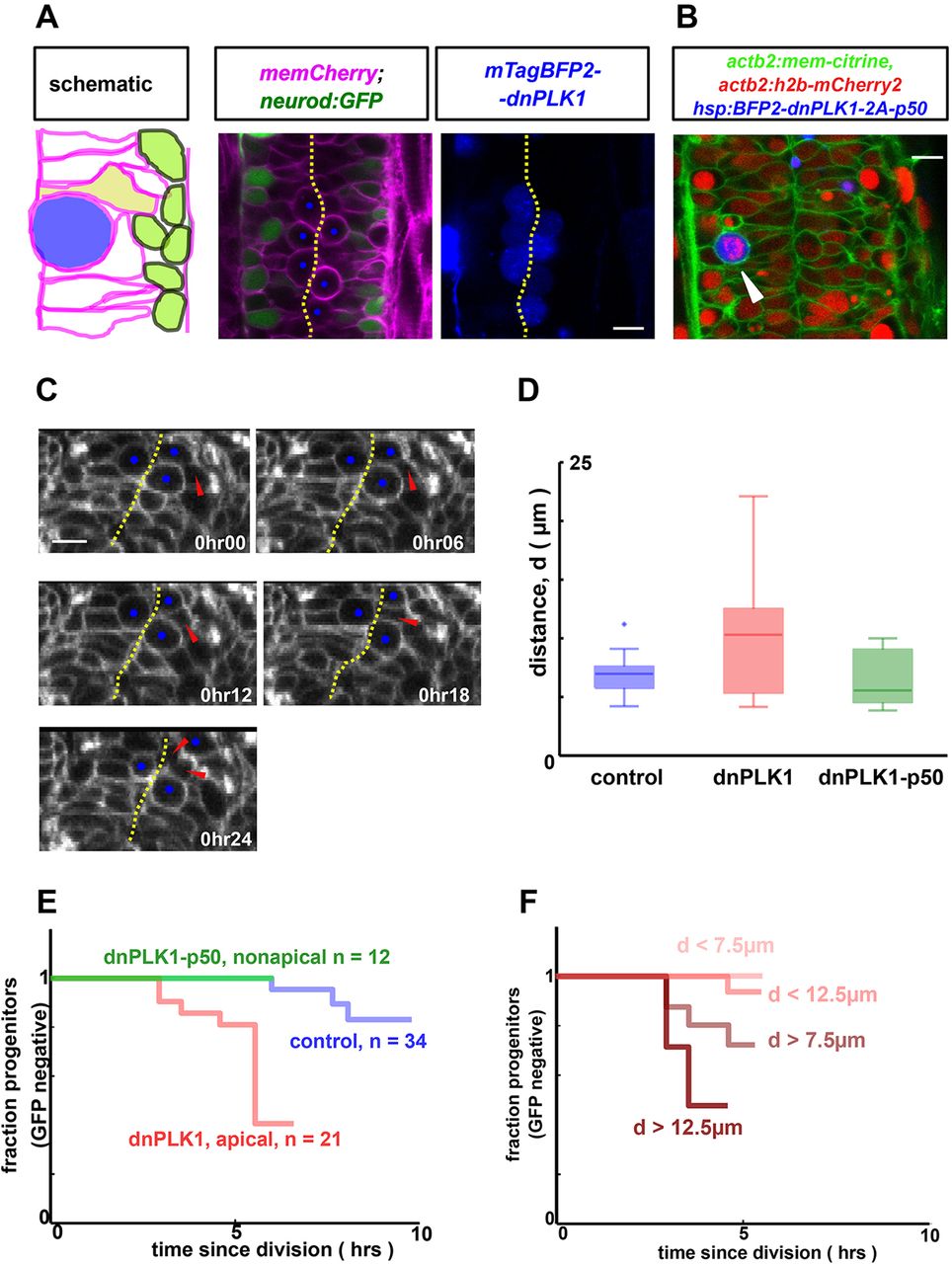Fig. 3
Pushing progenitors away from the apical surface by an arrested mitotic cell promotes their differentiation. (A) Cell shapes are perturbed by inducibly and mosaically arresting neighboring cells in mitosis by using a heat shock-inducible dnPLK1 construct that prevents mitotic exit. Scale bar: 10 µm. (B) Arrested mitotic cells can be nonapical (arrowhead) when p50 is co-expressed with dnPLK1. h2b-mCherry demonstrates condensed chromosomes, hence mitotic entry. Scale bar: 10 µm. (C) Arrested cells (blue dots) crowd the apical surface, pushing neighboring unperturbed cells away (red arrowhead). These cells still approach the midline to divide (last frame) and are then tracked to monitor differentiation status. Note that banding artifacts and pixellation visible in these panels result from data acquisition and processing methods (see Materials and Methods). Scale bar: 10 µm. (D) Cells adjacent to the arrested mitotic cell are shifted basally (P<0.01, n=10 for dnPLK1, n=26 for control). Here, d is the distance to the apical surface prior to division, as measured in Fig. 2. In contrast, progenitors remain apical when adjacent to dnPLK1-p50 arrested non-apical mitotic cells (P=0.6). (E) Tracking of single cells adjacent to an arrested mitotic cell reveals a significant increase in differentiation (P<0.01) compared with control (data from the same experiment as Fig. 2). In contrast, non-apical mitotic cells do not induce differentiation of their neighbors (P=0.8, n=12 versus control). (F) Single-cell tracking reveals the same correlation between cell shape and neurod dynamics as in Fig. 2 for cells adjacent to arrested mitotic cells (using the n=21 tracked dnPLK1 cells).

